Motichoor Ladoo is a popular Indian sweet recipe that is soft, flavorful, and will melt in your mouth. This Indian dessert is mainly prepared during special occasions and festivals like Diwali, Navratri, and Raksha Bandhan.
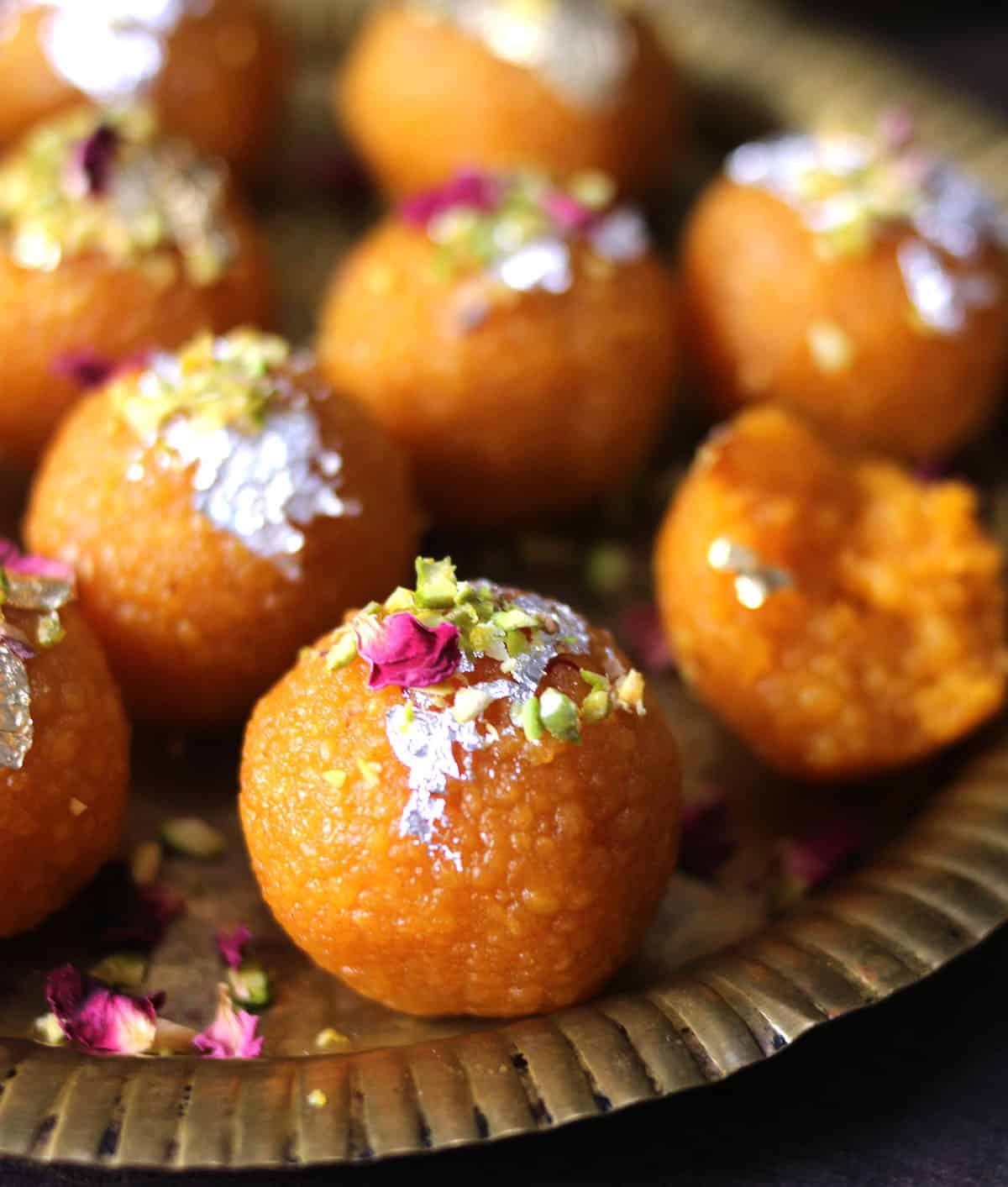
About the recipe
What is Ladoo (Laddu)?
Ladoo means anything that is round in shape and sweet. No Indian festival or special occasion is complete without laddus.
Laddus are made using flour, fat, and sugar or jaggery and garnished with nuts and vark.
The flour used to make boondi for ladoos can be chickpea flour (besan), almond flour, wheat flour, urad dal flour or moong dal flour (lentil powders), semolina(sooji), rice flour, or even millet flour.
Fat used for frying the boondi can be ghee, butter, oil, or vanaspati dalda (shortening).
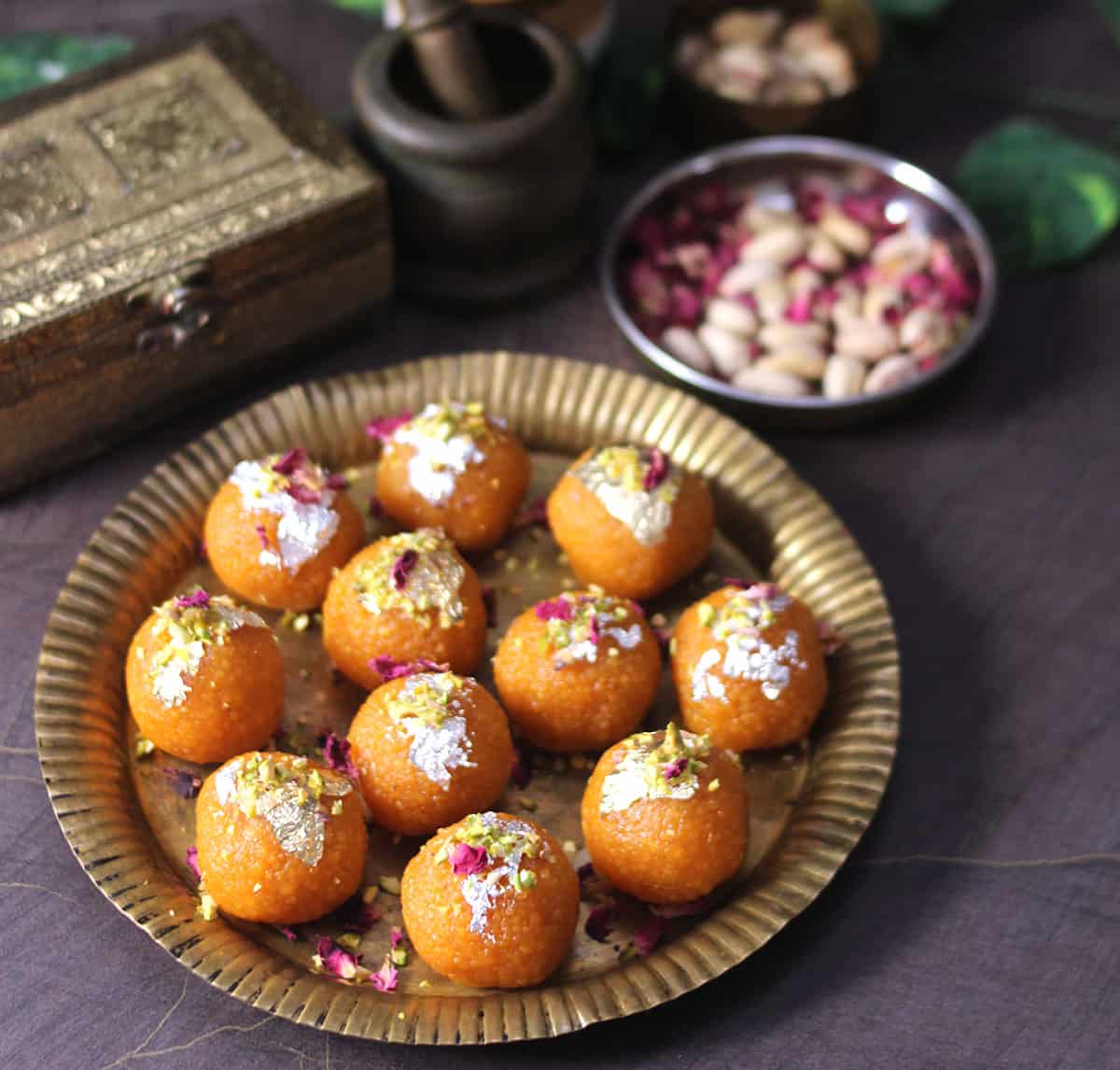
What is Motichoor Ladoo?
Motichoor ladoo is made using gram flour (besan), sugar, and aromatic flavorings such as Kesar and cardamom powder.
The gram flour or chickpea flour batter is fried into tiny balls, then mixed into the sugar syrup and rolled into round balls.
Moti means pearl, and chur (or choor) means crumble - so motichoor ke laddu means crumbled pearls in the form of a ball. These ladoos are so soft that they crumble when you hold them in your hands and apply even a little pressure.
Motichoor Ladoo can be offered to God in the form of naivedyam during Ganesh Chaturthi or goddess Lakshmi or Durga during Navratri, Diwali.
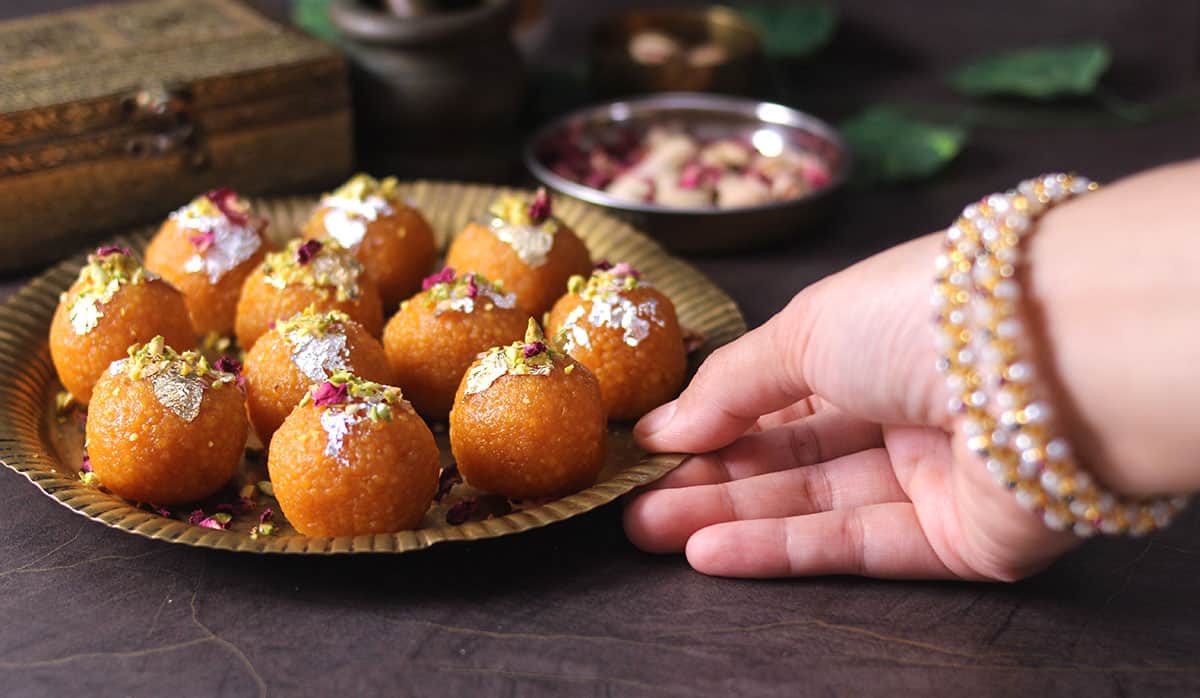
Difference between motichoor ladoo and boondi ladoo
The main difference between motichoor and boondi ladoo is the size of the boondi. Boondi ladoo uses larger fried besan balls, while motichoor has tiny besan (gram flour) balls. The sugar syrup consistency (chashni) for both the ladoos is also different, thus the final texture.
Motichoor is popular in North India, and Boondi ladoo is popular in South India. In Konkani, we call Boondi Ladoo as mithai undo.
Pro Tips
To make a perfect halwai-style motichoor ladoo, you need motichoor ladoo jhara - a perforated laddle with tiny holes to pour the batter into the hot oil. This jhara is available on Amazon or any Indian kitchen appliance store. But if you are not a person who would be making motichoor ladoo frequently and do not want to buy a jhara specially designed for the purpose, you can still make the ladoos with regular perforated laddle. Pulse the fried boondis in your mixer grinder to a finer texture.
The batter for making motichoor ladoos should be a smooth-flowing batter without any lumps. That is, it should easily come out of the jhara.
Do not over-fry the boondis. Boondis should be soft and cooked. You don't have to cook it until it becomes crispy.
Sugar syrup should be of one-string consistency to have perfectly rolled ladoos.
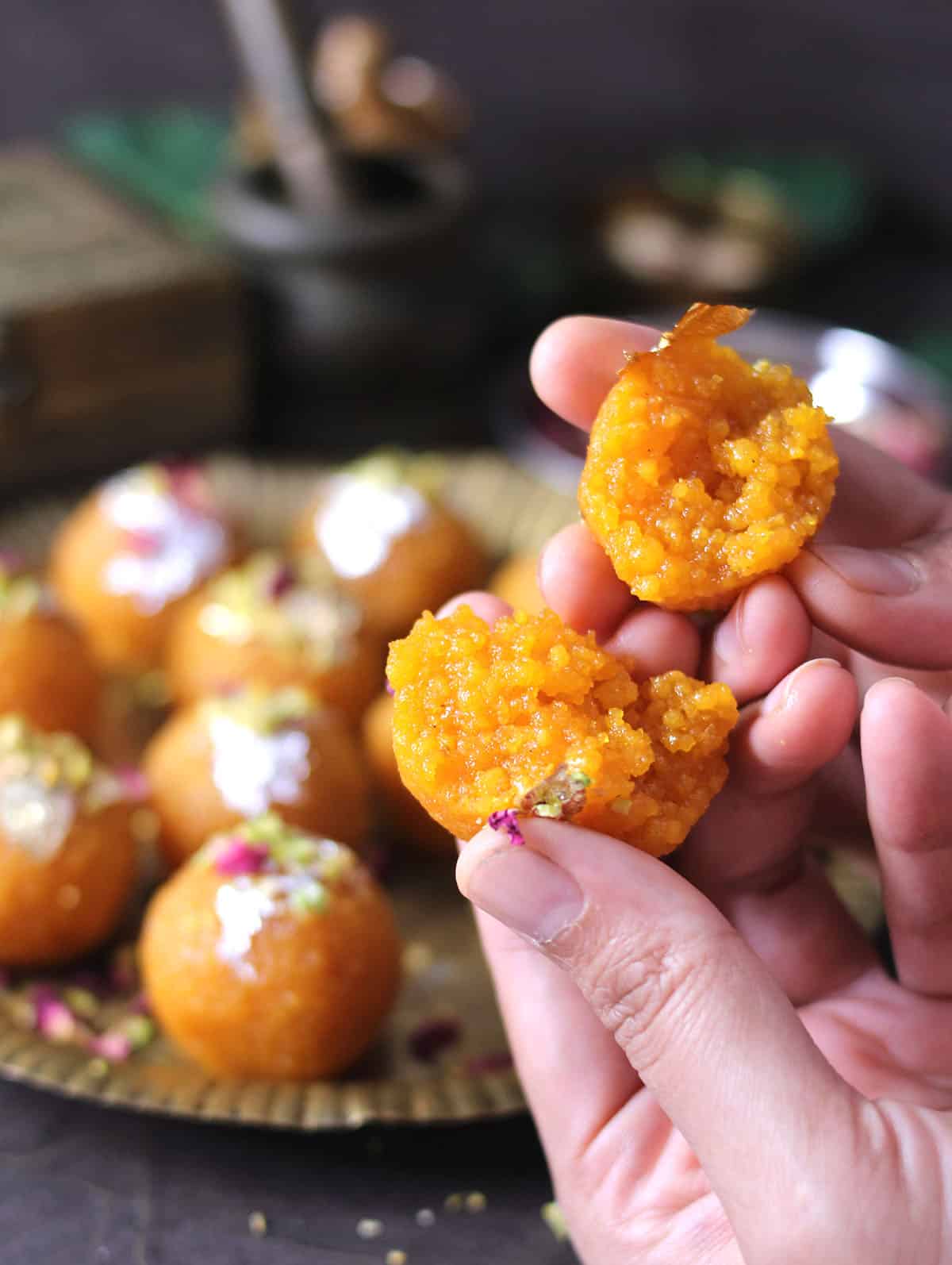
Ingredients
For Sugar Syrup
1 cup Sugar
½ cup Water
¼ teaspoon Cardamom powder
Pinch of saffron powder or crushed saffron (Kesar)
Pinch of orange food color (optional)
For Making Boondis
1 cup Besan (Chickpea flour or Gram Flour)
¾ cup Water, approximately
¼ teaspoon Cardamom powder
Pinch of saffron powder or crushed saffron (Kesar)
Pinch of orange food color (optional)
Ghee or Oil for frying
For decorating and garnish
Pistachios, crushed
Rose petals
Golden or Silver Vark
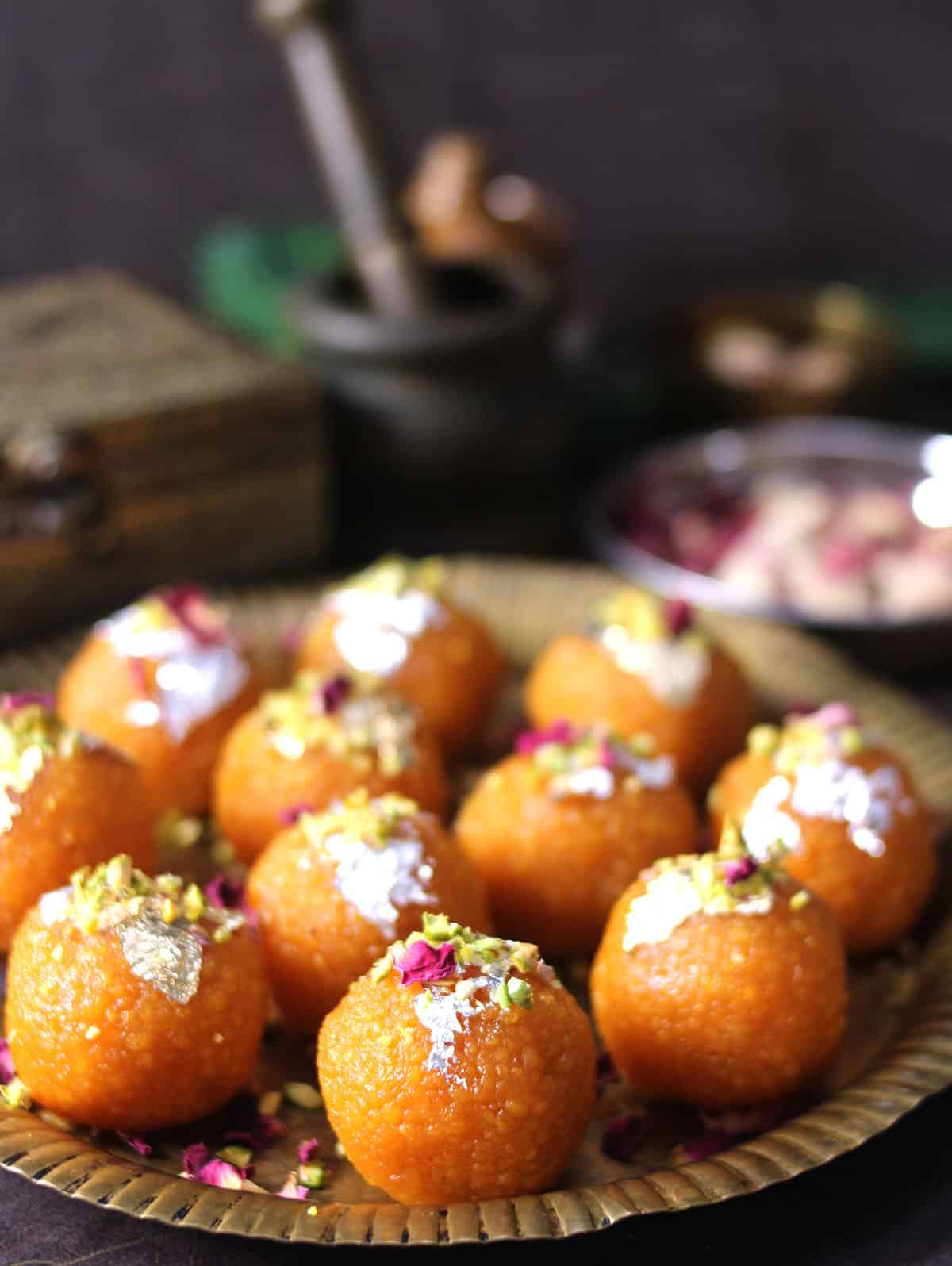
How to make the best and perfect motichoor ladoo?
Making sugar syrup
In a pan, add sugar and water and bring it to a boil.
Add cardamom powder and saffron, and cook the mixture on medium heat until it reaches one string consistency. To check one string consistency, take a drop of cooled syrup between your thumb and forefinger and press it. And now, when your separate your fingers, it should form one string that does not break apart.
Switch off the flame and keep this aside.
Making of Boondi
In a bowl, add besan (gram flour), cardamom powder, saffron, a pinch of color if needed, and mix. Now add water little by little and whisk continuously to form a smooth, thin, lump-free batter of free-flowing consistency.
Heat oil in Kadai or pan for frying. Once the oil is hot, place the perforated laddle or motichoor jhara 3 to 4 inches above the oil and pour the batter. The batter will fall from these holes as tiny droplets.
Fry it for about a minute until it is cooked through, and remove it from the oil. Do not overcook the boondis.
Now using another perforated laddle, remove the boondis and see that you drain the oil very well.
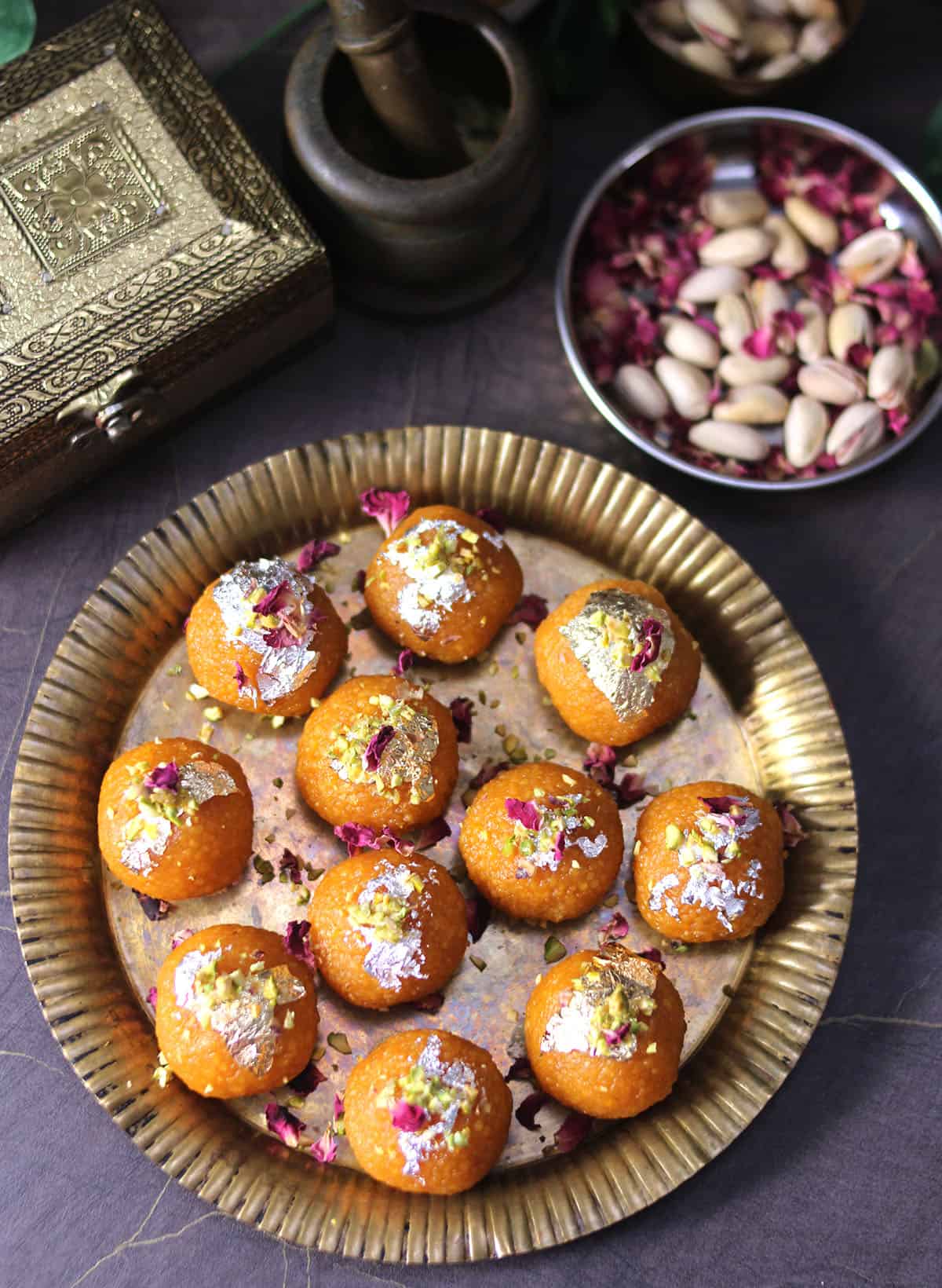
Transfer this to a paper towel and cover it with a lid to prevent it from drying while you make the remaining boondis.
Wipe the laddle once with a clean cloth before you start pouring the next batch of batter.
Note: The sugar syrup should always be warm, so you can keep it on the flame at the lowest setting once you start frying or place the pan on a plate with hot water.
Now add the fried boondis to the warm sugar syrup and cook on the lowest setting for 2 to 3 minutes. This step ensures that the boondis become soft and sweetened all through. Do not overcook the boondis in sugar syrup.
Switch off the flame. Cover and keep this aside for 2 to 3 minutes.
When the mixture is warm to touch, grease your palm with ghee and pinch a small piece of the mixture and shape them into balls.
Garnish it with pistachios, vark, and rose petals. Enjoy.

Make Ahead and Store
Mothichur laddus have a long shelf life. So once you shape them, you can store them in an airtight container at room temperature for 7 to 8 days and up to a month in the fridge.
So if you are planning to make a mithai gift box this Diwali, you can add this ladoo to your menu.
How to make motichoor ladoo without jhara?
- You can use a regular perforated laddle that you use at home to fry these boondis. Once the boondis are fried, pulse once or twice in your blender or mixer grinder, or even food processor, and then add it to the sugar syrup.
- You can also use a tea strainer or sieve to make boondis.
- Alternately, wrap the back of your jhara or regular perforated laddle with aluminum foil. Then using a pin, punch several holes. This tin foil with tiny holes would look like your motichur laddu jhara hole #1. Use this to drop the batter.
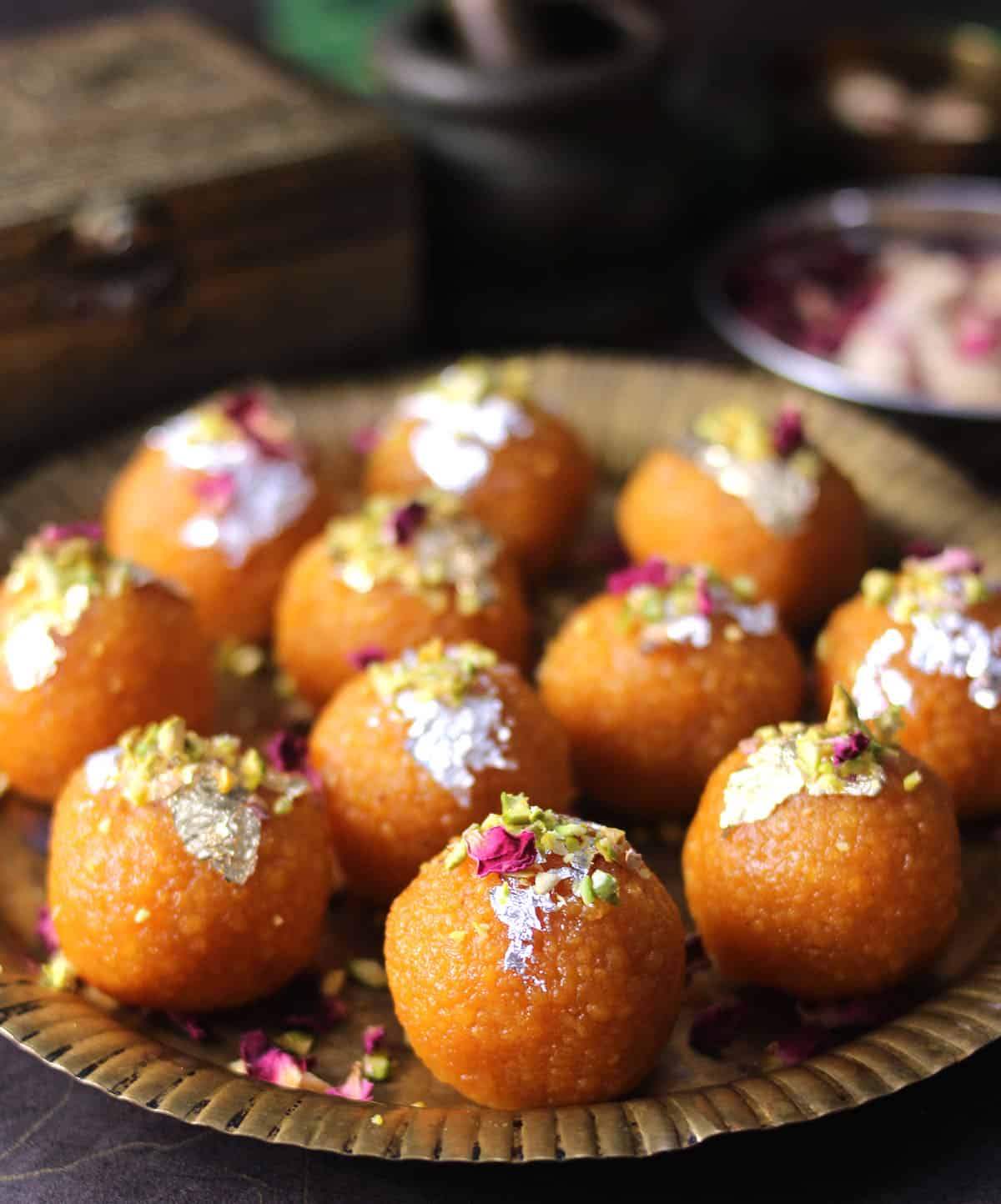
FAQ
For perfect texture, always fry the boondis on medium flame. Frying them on a high flame will make them dark or burnt, and frying them on a low flame will make them soggy.
The batter's consistency and the oil's temperature play a critical role in how the boondis turn out. The batter should not be too thick or too thin. Always heat oil on medium flame.
If the boondi sugar syrup mixture is not warm, then it is not able to bind and shape. In this case, heat the mixture again on low flame and try to bind again.
Drain off any excess syrup. This will help you to bind the ladoos more easily.
Yes. You can follow the same steps. The taste, color, and texture will vary depending on the type of jaggery used.
Some more ladoo (laddu) recipes to try
Recipe card
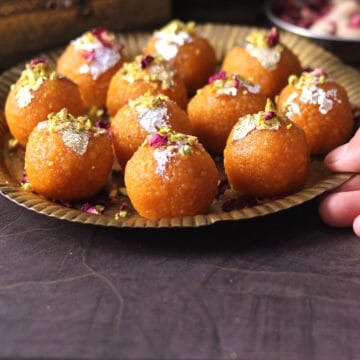
Motichoor Ladoo Recipe | Motichur Laddu - Best Indian Sweet
Equipment
- 1 Motichoor Boondi Jhara
- Mixing Bowl
- Frying Pan
Ingredients
For Sugar Syrup
- 1 cup Sugar
- ½ cup Water
- ¼ teaspoon Cardamom powder
- Pinch of Saffron powder or Crushed saffron (kesar)
- Pinch of orange food color (optional)
For Making Boondis
- 1 cup Besan (Chickpea flour or Gram Flour)
- ¾ cup Water, approx
- ¼ teaspoon Cardamom powder
- Pinch of Saffron powder or Crushed saffron (kesar)
- Pinch of orange food color (optional)
- Ghee or Oil for frying
For decorating and garnish
- Pistachios, crushed
- Rose petals
- Golden or Silver Vark
Instructions
Making Sugar Syrup
- In a pan, add sugar and water and bring it to a boil.1 cup Sugar, ½ cup Water
- Add cardamom powder and saffron, and cook the mixture on medium heat until it reaches one string consistency. To check one string consistency, take a drop of cooled syrup between your thumb and forefinger and press it. And now, when your separate your fingers, it should form one string that does not break apart.¼ teaspoon Cardamom powder, Pinch of Saffron powder or Crushed saffron (kesar), Pinch of orange food color (optional)
- Switch off the flame and keep this aside.
Making of Boondi
- In a bowl, add besan (gram flour), cardamom powder, saffron, a pinch of color if needed, and mix. Now add water little by little and whisk continuously to form a smooth, thin, lump-free batter of free-flowing consistency.1 cup Besan (Chickpea flour or Gram Flour), ¾ cup Water, approx, ¼ teaspoon Cardamom powder, Pinch of Saffron powder or Crushed saffron (kesar), Pinch of orange food color (optional)
- Heat oil in Kadai or pan for frying. Once the oil is hot, place the perforated laddle or motichoor jhara 3 to 4 inches above the oil and pour the batter. The batter will fall from these holes as tiny droplets.Ghee or Oil for frying
- Fry it for about a minute until it is cooked through, and remove it from the oil. Do not overcook the boondis.
- Now using another perforated laddle, remove the boondis and see that you drain the oil very well.
- Transfer this to a paper towel and cover it with a lid to prevent it from drying while you make the remaining boondis.
- Wipe the laddle once with a clean cloth before you start pouring the next batch of batter.
- Note: The sugar syrup should always be warm, so you can keep it on the flame at the lowest setting once you start frying or place the pan on a plate with hot water.
- Now add the fried boondis to the warm sugar syrup and cook on the lowest setting for 2 to 3 minutes. This step ensures that the boondis become soft and sweetened all through. Do not overcook the boondis in sugar syrup.
- Switch off the flame. Cover and keep this aside for 2 to 3 minutes.
- When the mixture is warm to touch, grease your palm with ghee and pinch a small piece of the mixture and shape them into balls.
- Garnish it with pistachios, vark, and rose petals. Enjoy.Pistachios, crushed, Rose petals, Golden or Silver Vark
Nutrition
For more recent updates, follow me on Pinterest, Instagram, and Twitter.
***Click below to save it on Pinterest***
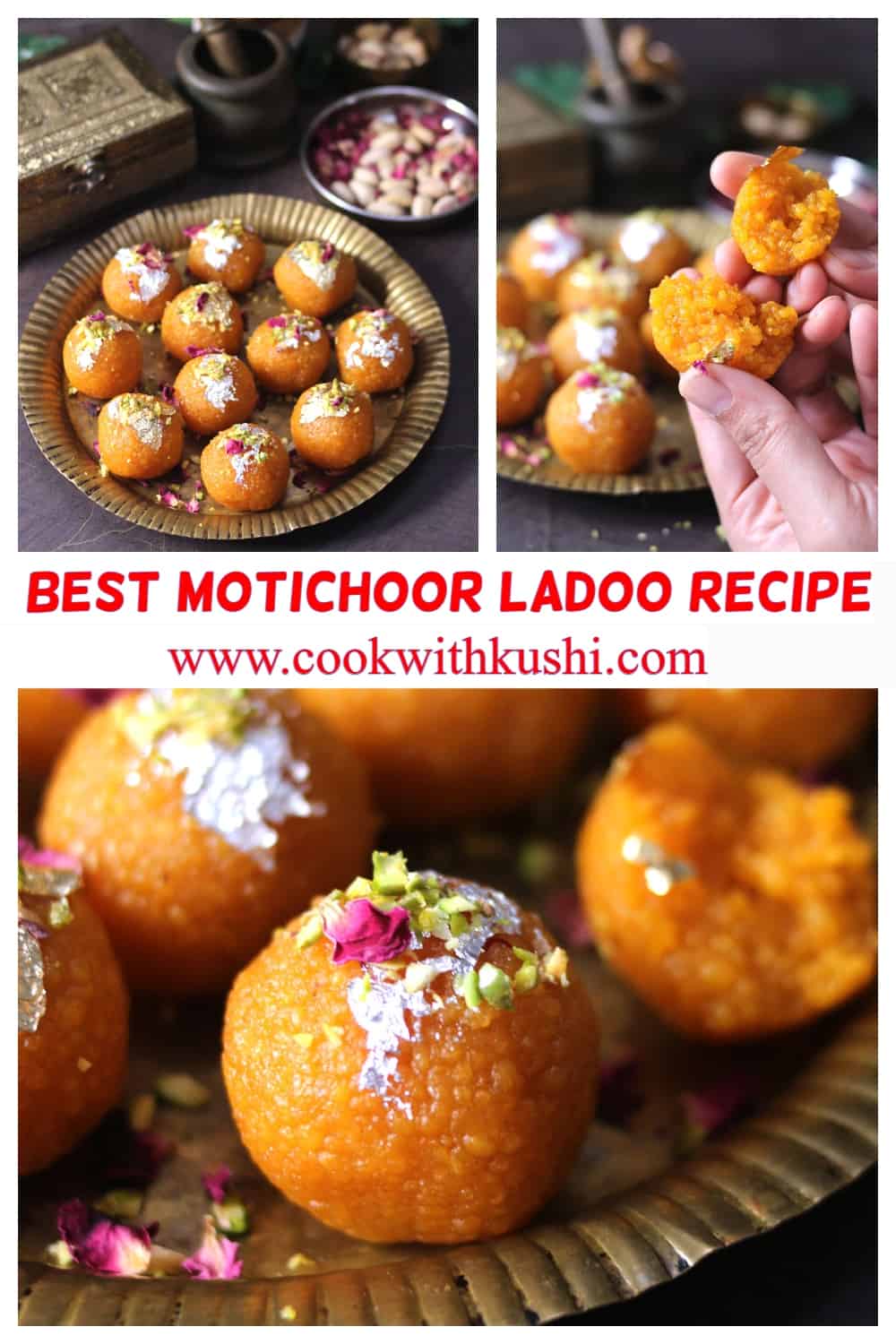

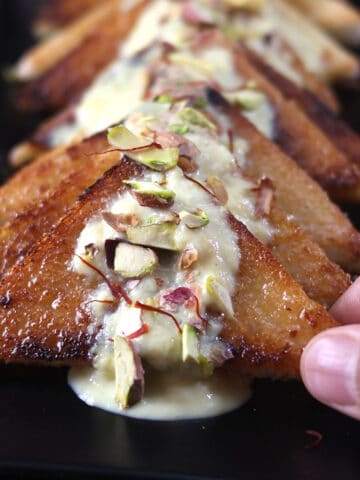

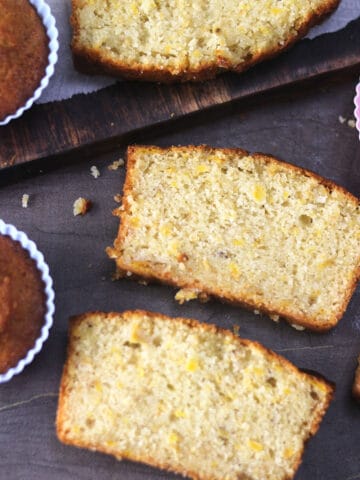
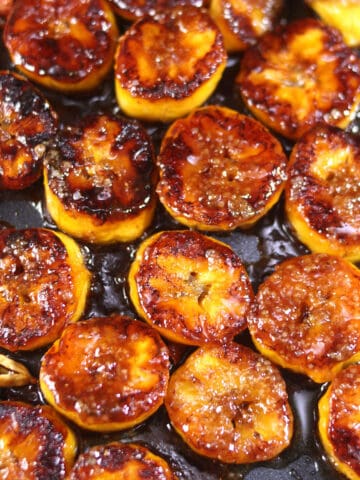
Gina Abernathy
A very interesting recipe and something I would love to try soon.
Beth
Just looking at these is making me so hungry! I love the flavors listed too. Great recipe.
Renee
Beautiful and delicious - a winning combination! Thank you for the clear, precise recipe directions.